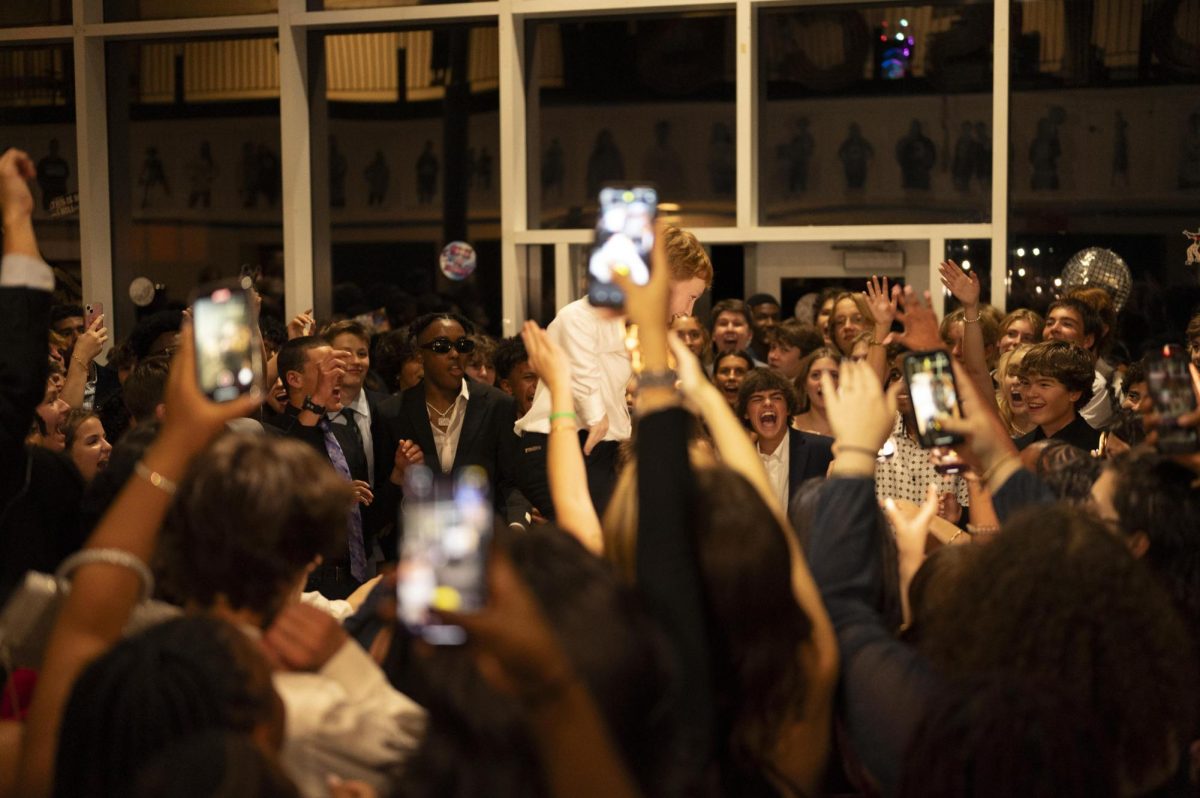Consumerism Facilitated by Social Media
May 24, 2021
In recent months TikTok as well as other copycat platforms like Instagram Reels have gained such immense popularity that they influence our generation in ways social media never has before. The trends are constant, infinite, and gone as fast as they appeared. Recently, companies have utilized these trends to market products, especially clothes. As a member of our generation you have most likely seen thousands of videos that are essentially trying to sell something. When surveyed, 39.2% of C.H.S. students said they saw these types of videos 1-10 times a day. It’s time to be more critical of what we’re being shown and why. In a capitalist society recently facilitated by addictive social media platforms, how will you become a product of your own discretion?
The main way in which these products are discreetly placed is through the sponsorship of small and large influencers. You have probably seen thousands of videos with a title like Opening the packages I get in a week as an influencer, New trends to look out for, What everyone is wearing this summer, and Pieces you need this season. These titles are deceiving: for one, it creates the illusion that there is in fact a necessity for a constant flow of purchasing, and two it insinuates there is some consequence for not following the trends. These videos are incredibly influential. The repetition embeds ideas into our head and after seeing a certain product/type of clothing so many times we do in fact believe we need it. Here’s the catch: the trends go out of style so fast you will be trapped in a loop of constant consumption. This all contributes to fast fashion, a concept criticizing the ridiculous amount of purchases of unsustainable fashion.
The influencers aren’t necessarily to blame. They are the pawns in a game where big corporations move the pieces. Clothing companies’ most effective marketing technique is to connect with the young target audience through other young people. These influencers are often attractive, in shape, and young, which makes them easy to idolize. And if you haven’t noticed yet, these companies profit off of our biggest insecurities. The way we look, what we wear, the need to be accepted are all things that corporations tell us they can fix through purchases. 73.3% of surveyed students said they have bought an item after seeing a video about it. We see these people and we want to be like them, and conveniently enough all their outfits are linked below: the cycle never ends.
Fashion has always been dynamic and there has always been trends, but never at this rate. Items become outdated within weeks of purchase, and are immediately replaced with a new fad. In addition to the frightening rate of change, current fashion also contains so much conformity because of the accessibility of social media, and news spreads very quickly while the same message is repeated many times. For the week-long life span of a certain clothing item, it’s all you see, and as soon as it has been put to sleep by the next item, it’s no longer “cool” to wear. Tennis skirts, argyle, crochet tops, the items are endless. There has never been so much categorization, or pressure to fit into a certain “aesthetic.” 79.9 % of surveyed C.H.S. students said that these types of videos cause people to dress similarly. More than ever we are at risk of losing our sense of identity.
It’s ironic that in a generation that fosters conformity through social media, there is also a constant and competitive need to be different, striving to be deemed original, but the best way to achieve this is through directly avoiding the trends, not following them. The main way we can cultivate individuality is by tuning into our innermost desires, finding out what we like when we separate ourselves from the current hive minded mentality that social media has created.
The fear of our generation: being called basic. However, when trends come and go so fast anything outdated becomes basic. Understand that the word basic was designed to shame those who can’t keep up with the movement of fast fashion. We lack the understanding that what was “quirky” and “stylish” a month ago becomes basic in the present moment, therefore an ability to follow trends does not create an individual identity. The paradox: if you are able to follow the trends, you are conforming more than those who are “basic.” Additionally, no man ever was called basic. Have you noticed that the pressure to keep up with these exhausting standards only ever applies to women? Choose to counter a capitalist patriarchal society and make independent decisions.
How do we do this? How do we become genuine individuals in a non-performative way? It seems so much now that the things we do, the places we go, and the way we dress are all done to be seen, to post about, and, in essence, to perform. It’s simple: follow the joy. Joy is different from a momentary dopamine rush that likes and comments create. Joy is a feeling of contentment, confidence, and essentially anything that makes you feel good about yourself. Research, learn, absorb, create a vision of the person you want to be. Bring the joy of expression back to fashion by directly countering what is “in” and cultivating a closet that represents you so that the trends don’t influence you to buy things you don’t need. By buying clothes that are representative of you and not the trends, your clothes can never go in or out if you didn’t buy them initially trying to conform to a trend.
This doesn’t mean that your style and identity won’t change and grow and take new forms, but just that this evolution is not controlled by social media. We are meant to change, but when social media gives us constantly shifting achievable standards, we will never stop trying to change. This is where we lose identity, when the process of finding yourself is constantly fast-tracked and tampered with by the influences around us.






